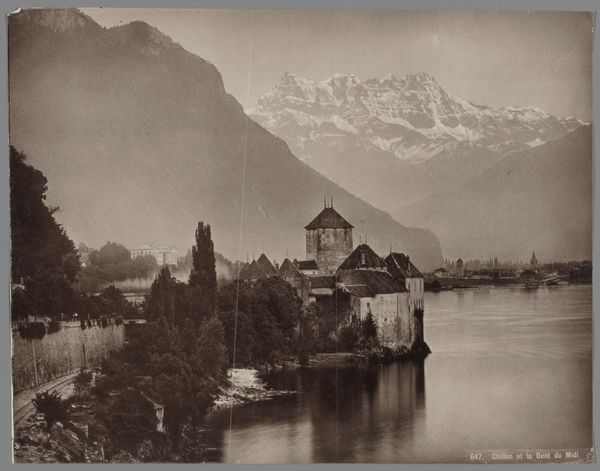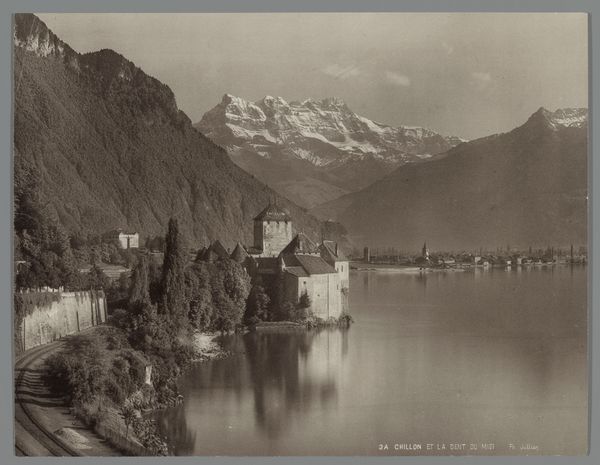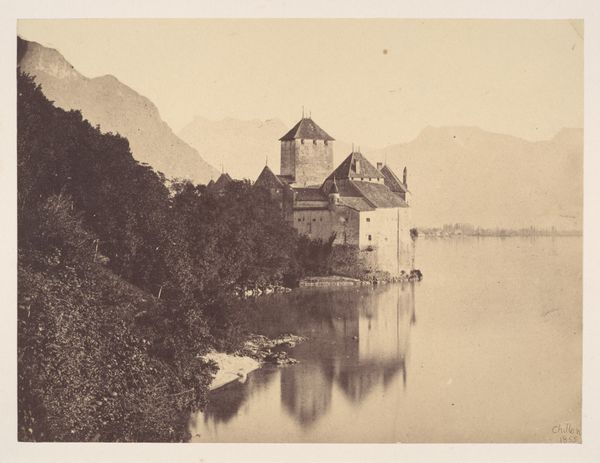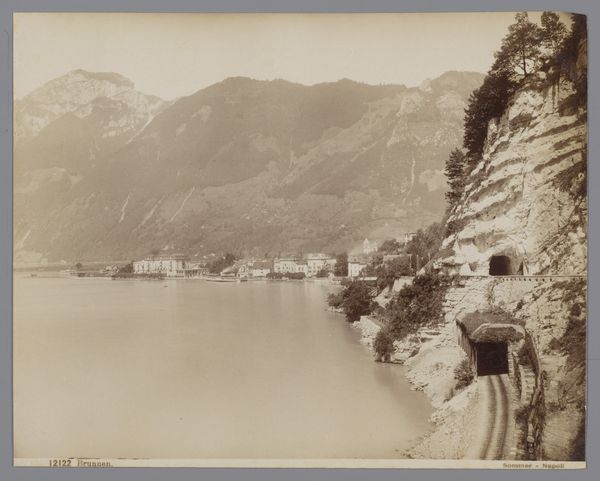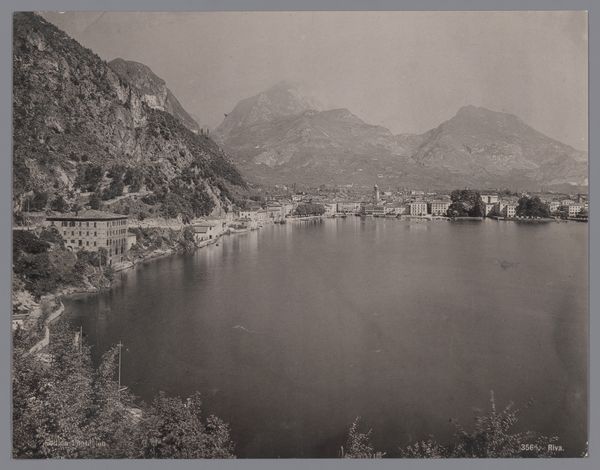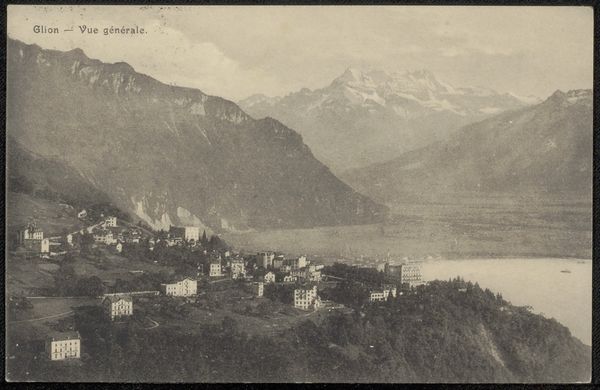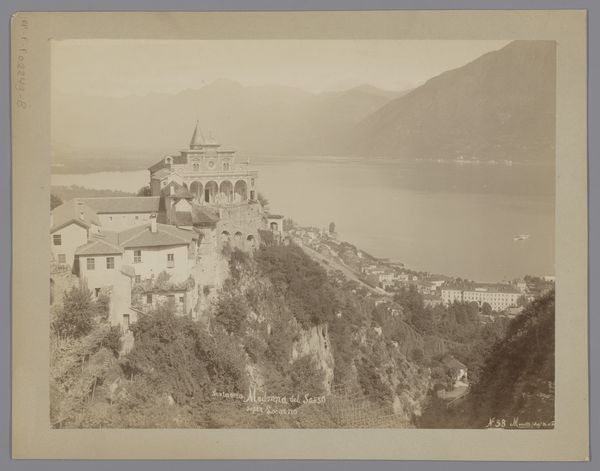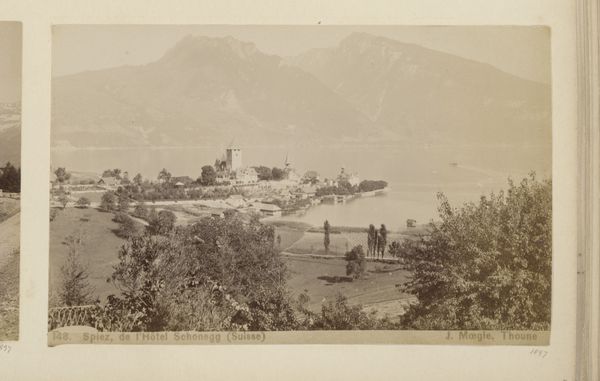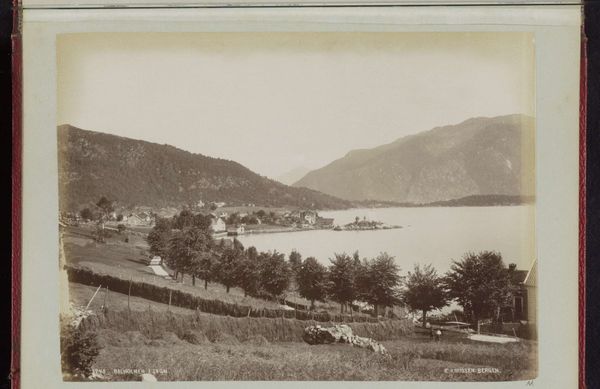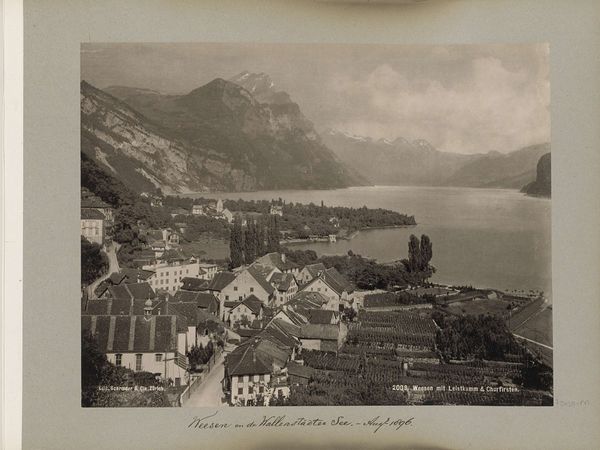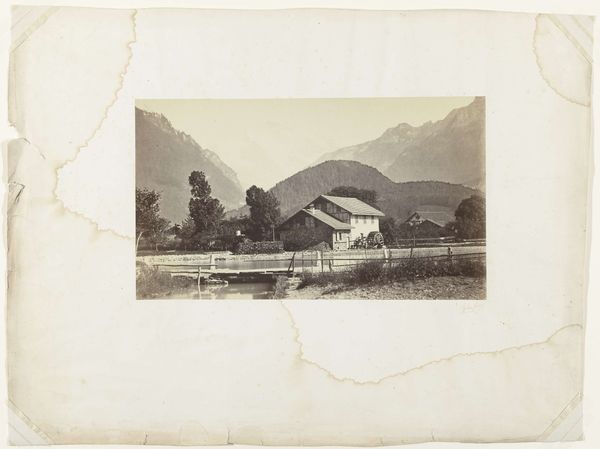
Gezicht op het Kasteel van Chillon aan het Meer van Genève met op de achtergrond de Dents du Midi before 1880
0:00
0:00
Dimensions: height 97 mm, width 140 mm
Copyright: Rijks Museum: Open Domain
Editor: This is "View of Chillon Castle on Lake Geneva with the Dents du Midi in the Background," a photograph attributed to Auguste Garcin from before 1880. It’s quite striking—a serene landscape dominated by this imposing castle, yet the overall mood feels a little…stark. How do you interpret this work? Curator: Well, what stands out is how this image participates in the romanticisation of historical monuments that became popular in the 19th century. Photography, though relatively new, was used to both document and idealise these locations. Editor: Idealise? It feels more documentary than say, a painting. Curator: Think about it: who commissioned or purchased these early photographs? Often it was the emerging middle class eager to partake in the 'Grand Tour' experience through visual surrogates. The castle, with its storied past and dramatic setting, signified a link to a medieval, often idealised, past. What message do you think placing it directly between the mountains, lake and trains sends? Editor: So, by framing the castle so prominently amidst this stunning landscape and new technologies, the photograph feeds into a certain kind of...national pride? Linking Switzerland’s history to its natural beauty and advancements? Curator: Precisely! Early photography like this wasn't simply about objective record; it also actively contributed to constructing national identity and promoting tourism. This print, then, is a product of specific cultural forces at play in the late 19th century. Editor: That’s fascinating! I never considered the photograph as more than just a landscape image, but seeing it as a piece of cultural commentary really shifts my perspective. Curator: It’s all about contextualising art, looking beyond the surface and examining its historical and cultural footprint. It changes our perspective.
Comments
No comments
Be the first to comment and join the conversation on the ultimate creative platform.
